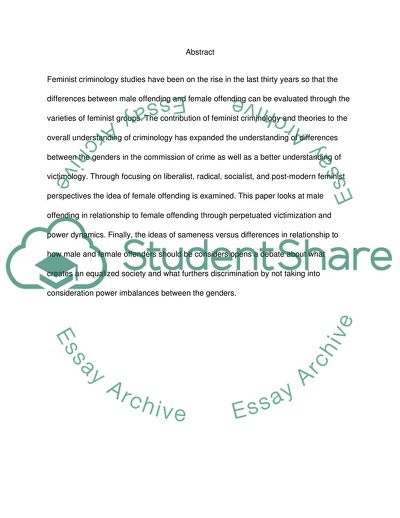Cite this document
(Feminist Criminology Perspectives and the Female Offender Report Example | Topics and Well Written Essays - 3000 words, n.d.)
Feminist Criminology Perspectives and the Female Offender Report Example | Topics and Well Written Essays - 3000 words. https://studentshare.org/gender-sexual-studies/1793381-feminism-the-paper-subject-is-criminology
Feminist Criminology Perspectives and the Female Offender Report Example | Topics and Well Written Essays - 3000 words. https://studentshare.org/gender-sexual-studies/1793381-feminism-the-paper-subject-is-criminology
(Feminist Criminology Perspectives and the Female Offender Report Example | Topics and Well Written Essays - 3000 Words)
Feminist Criminology Perspectives and the Female Offender Report Example | Topics and Well Written Essays - 3000 Words. https://studentshare.org/gender-sexual-studies/1793381-feminism-the-paper-subject-is-criminology.
Feminist Criminology Perspectives and the Female Offender Report Example | Topics and Well Written Essays - 3000 Words. https://studentshare.org/gender-sexual-studies/1793381-feminism-the-paper-subject-is-criminology.
“Feminist Criminology Perspectives and the Female Offender Report Example | Topics and Well Written Essays - 3000 Words”. https://studentshare.org/gender-sexual-studies/1793381-feminism-the-paper-subject-is-criminology.


